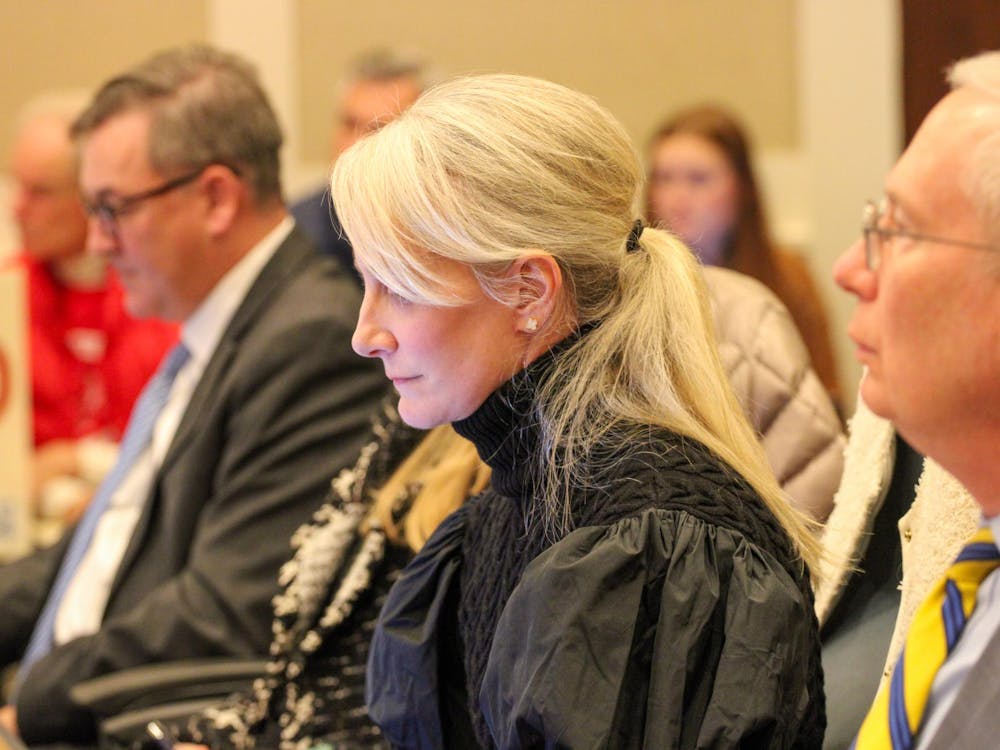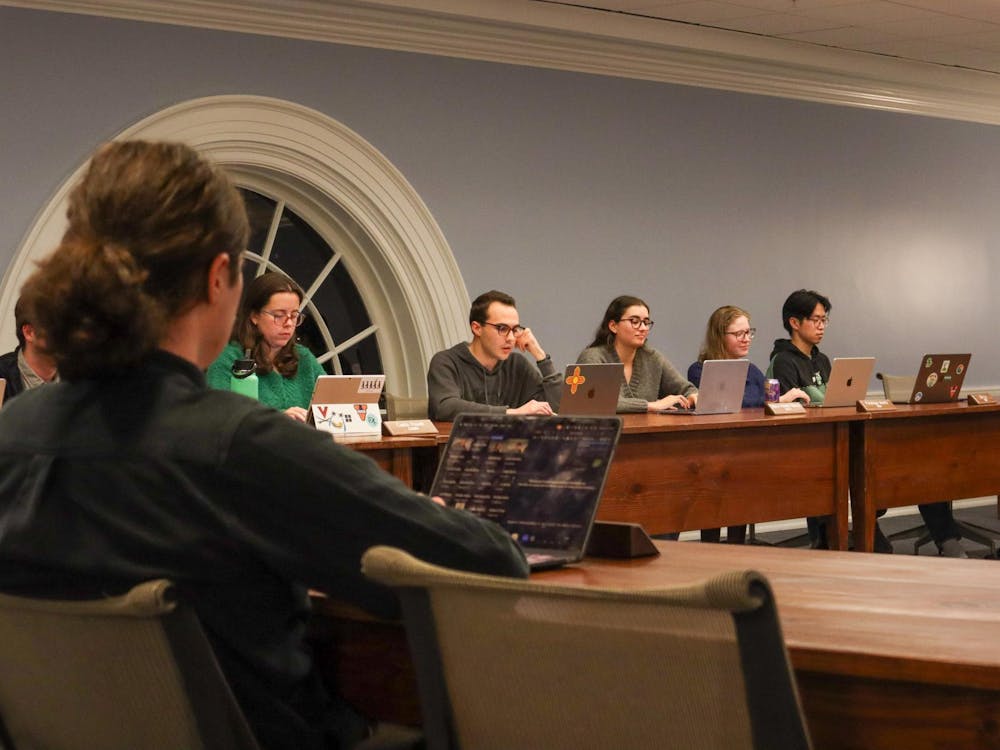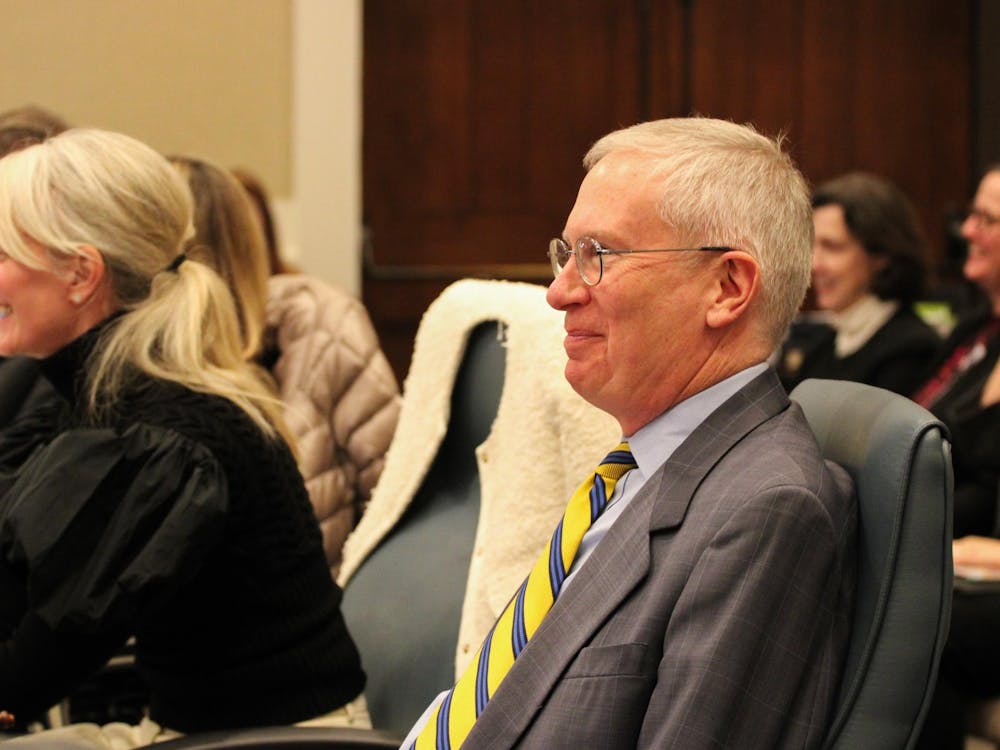From the English Department with a yearly budget of over $5 million to the Women's Studies Department with its share of the budgetary pie at just over $200,000, University allocation of funds to different departments is influenced by several factors.
Department size, the technology it uses, and the faculty it attracts all contribute to how money is allocated. These factors, coupled with the previous year's budget as a precedent on which to work, help the Budget Office with the difficult task of configuring the finances for the entire University.
"Your budget is based on the year before, but if there's special needs they can request them and we can try to meet them based on priorities," Budget Office Director Melody Bianchetto said. "Each year we're not sitting down and saying biology gets this much and drama gets that much. We don't reevaluate the base budget every year."
Despite the rigorous process, sometimes the allocation raises concerns from different sectors of the University.
"All departments present their case each year for larger budgets," College Dean Melvyn P. Leffler said. "Every department claims it needs additional funding. In fact, I'm sympathetic to most of these claims. The truth is that all departments in the College need additional funding support."
The over-700-page University budget for the 1999-2000 fiscal year - which started July 1 and ends June 30, 2000 - is drawn up by the University Budget Office, passed along to the Board of Visitors and ultimately presented to the General Assembly.
When the budget is finalized, department chairmen may review it and appeal to the dean of their school for further funding.
"We always ask for more money so we can try to do the things we need to do," said Joel Rini, chairman of the Department of Spanish, Italian and Portuguese.
State funding accounts for 22.2 percent of the academic division's budget - a segment many officials say is insufficient for the University to operate at the same level as its peer institutions.
"I do think the sciences are in danger of sloping down unless the finances are forthcoming," Physics Dept. Chairman Michael Fowler said. "Our competitor schools put in substantial new capital and we are becoming less competitive. The state has a large share of the blame."
Since about 80 percent of the University's budget goes toward salaries, the budget plays a large role in maintaining a department's academic as well as financial health.
"Two of our brightest young faculty have left to go to Lucent Technology(r). One of the main reasons was because they didn't see a bright future at U.Va.," Fowler said, emphasizing the importance of competitive faculty salaries as a means to attract and maintain talented faculty.
"I think that if the sciences are going to do as well as other subjects, like the humanities, then the University is going to have to spend a lot more money," he said.
Leffler said state funding is key to ensuring the academic reputation of the University.
"The fundamental problem is that the Commonwealth of Virginia does not support higher education adequately in Virginia, and therefore most colleges and most departments throughout the state are stretched to the limit," he said. "The ultimate result is that students in the College are not being supported at rates comparable to students at other major public universities throughout the United States."
The arts at the University often have suffered as a result of insufficient funding, Studio Art Dept. Chairman Dean Dass said.
"We are very impoverished," Dass said. "We have the worst facilities; the arts are very neglected."
He said the climate for support of the arts has been changing, though.
He added that Leffler has been supportive of the arts and that last year, during the budget appeals process, he approved a new adjunct professor position for drawing.
Last year, University President John T. Casteen III announced an initiative to improve the arts scene at the University by proposing a Center for Fine and Performing Arts.
Bianchetto said such future plans would take a high position on the University's list of financial priorities.
Apart from inter-departmental funding woes, however, inter-University funding reveals itself as an equally important issue.
A closer look at per-student funding
The University's professional graduate schools, like the School of Law and the Darden School, have a far higher per-student funding rate than the University's undergraduate schools.
The School of Law, with 1,088 students and a total budgetary funding allocation of about $24 million, has a per-student funding rate of $22,237.09.
Darden boasts a funding rate of $36,559.98 for each of its 492 students.
The Medical School weighs in with a funding rate of $218,531.44 for each of its 577 students.
On the other end of the spectrum lies the College with funding per student at a significantly lower $9,848.62. This number includes both undergraduate and graduate students, a total of 10,562 students.
This is lower than the Architecture School which boasts $11,274.83 per student; the Commerce School with $13,997.42 per student; the Nursing School with $18,089.53 per student; the Education School with $15,447.23 per student, and the Engineering School which comes out on top with $21,753.046 per student.
The College is the largest undergraduate school at the University, which may account for lower funding per student, but Leffler said the University must reevaluate its priorities in determining the budget.
"The larger case is how the College is funded vis-a-vis the rest of the University," he said. "There are issues with regard to funding of each of the units of the University. One of the important concerns is not how much each department gets, but how the overall budget of the University is configured."
He added that the College's financing per student is an issue that should be addressed.
"There are a variety of reasons that might account for why one unit is financed at a higher rate," Leffler said. "In my opinion, these reasons need to be looked at more carefully and the historic patterns need to be re-examined in order to make sure that they are appropriate for today's context."
But Leonard W. Sandridge, University vice president and chief operations officer, said the budget should be looked at more closely.
"What you're looking at is the different costs of providing an education," Sandridge said. "The Engineering School is very equipment-intensive."
He said it is much more costly to educate a physics or chemistry major than it is to educate a history major, for example.
Architecture School Dean Karen Van Lengen said she was pleased with the average per-student funding at the Architecture School - but said it could be better.
"It's a good average funding as far as architecture schools go," Van Lengen said. "It's probably less than we would like in terms of other schools in the University."
Departmental Budget Allocations 1999-2000
(In Dollars)
|
Anthropology |
1,468,674 |
|
Art |
1,427,960 |
|
Asian & Middle Eastern Languages |
652,542 |
|
Astronomy |
1,007,755 |
|
Biology |
2,760,327 |
|
Chemistry |
2,888,075 |
|
Classics |
511,748 |
|
Drama |
1,132,569 |
|
Economy |
1,975,513 |
|
English |
5,023,704 |
|
Environmental Science |
2,061,093 |
|
French |
1,360,824 |
|
Germany |
847,021 |
|
Government |
2,448,464 |
|
History |
3,220,640 |
|
Math |
2,551,146 |
|
Music |
1,001,644 |
|
Philosophy |
893,451 |
|
Physics |
3,472,123 |
|
Psychology |
2,747,340 |
|
Religion |
1,688,881 |
|
Slavic |
600,051 |
|
Sociology |
1,178,807 |
|
Spanish |
1,621,778 |
|
Statistics |
546,042 |
|
Women's Studies |
210,022 |
|
ENGINEERING |
|
|
Biomedical |
327,810 |
|
Chemical |
793,347 |
|
Civil |
1,207,566 |
|
Computer Science |
1,404,979 |
|
Electrical |
1,379,848 |
|
Applied Math |
1,061,656 |
|
Mechanical, Aerospace & Nuclear |
2,198,188 |
|
Systems |
1,024,872 |
|
TV |
615,044 |






